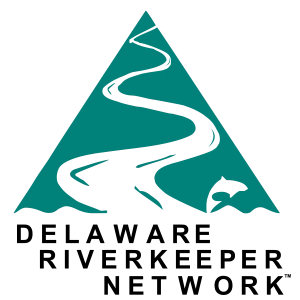Advocacy
A Living Resource
The Delaware River is the last major, free-flowing river in the East. It flows for 330 miles through 4 states, 42 counties and 838 municipalities. Through past and recent history to present day, communities throughout the region, regardless of political boundaries, have been drawn together by this river, recognizing it as a living resource that supports their lives. Many species of fish, aquatic life, birds, and other wildlife are dependent on the river and its flowing tributaries. The streams, wetlands and floodplain that are part of the Delaware natural system define the river in terms of its natural inventory and the quality of its resources. Boating, fishing, swimming and birding attract eco-tourism to the region from around the country.
Resources At Risk
But many of the River’s resources are at risk – sprawling development accompanied by increased stormwater runoff has resulted in higher and faster storm flows causing more flooding and greater flood damages. Making matters worse, continuing construction in the floodplain interferes with the floodplain’s ability to absorb and process high flows and puts people and structures in harms way. Sprawling development also means increased demand for water withdrawals from surface and groundwater supplies as well as increased discharges that degrade water quality, ecosystem health, and community quality of life. Overuse of the natural resources found in the Delaware system impose pressures that we may not be able to recover from. And project developers and dischargers who recognize existing opportunities to weaken regulations and/or battle new regulatory proposals are investing heavily in cutting regulatory protections for our environment to the bone. Informed and active professional and citizen activism is needed to challenge these pressures.
The Path We Choose Today Will Dictate Our Futures
The Delaware River and all of the communities that depend upon and care about the River are facing a turning point that will dictate, indelibly, the future of our region and how we live and grow as a community. We have the opportunity to do things very, very right, or very, very wrong — the path we choose today will dictate our futures — how and where we develop and extract resources, the health of our drinking water, the growth or decline of our recreational opportunities and ecotourism industries, whether we put people at risk of catastrophic floods and drought or protect them. This may sound dramatic — the truth is, it is a dramatic time — a “watershed moment” — for the river and all the communities, human and nonhuman communities, that appreciate and depend upon it.
Want to Know What’s Happening Now?
Advocacy Successes
See our featured Advocacy Success stories below.
The PennEast Pipeline Company proposed to build a 114-mile large scale natural gas pipeline through Luzerne, Carbon, Northampton, and Bucks County in Pennsylvania and Hunterdon County in New Jersey. It was announced on August 12, 2014 and the Federal Energy…
In 2016, DRN put out an Action Alert to submit comments to support a proposed bill to end the commercial harvesting of diamondback terrapins in New Jersey. On July 15, 2016, then-Governor Chris Christie signed this bill which ended commercial…
Continue Reading Ended Commercial Harvest of New Jersey’s Diamondback Terrapins
In July 2020, Elcon chemical hazardous waste storage and treatment facility withdrew its Pennsylvania Department of Environmental Protection (PADEP) permit applications. For over 6 years, the Delaware Riverkeeper Network, Protect our Water and Air (POWA), the Clean Air Council, and…
Continue Reading Elcon Commercial Hazardous Waste Treatment and Storage Facility Defeated
